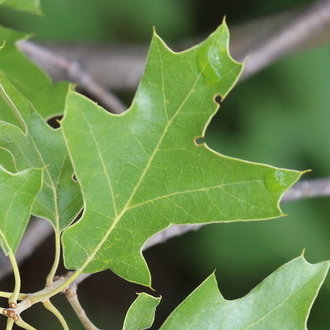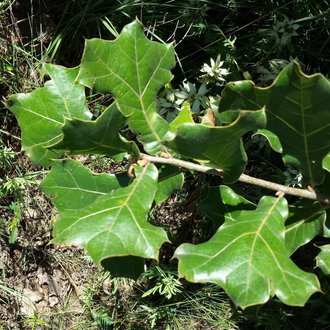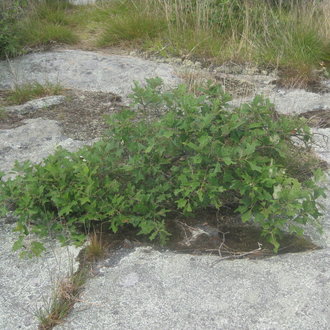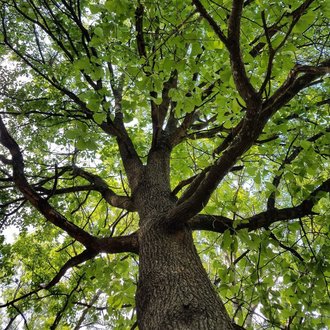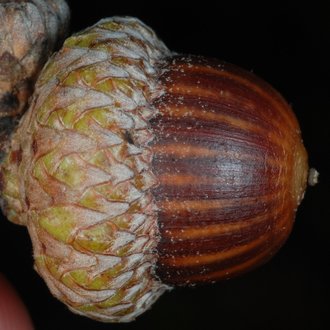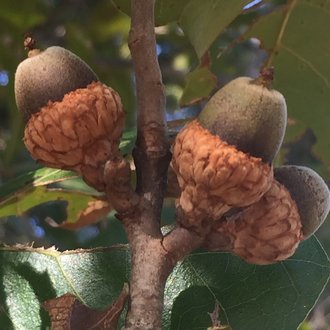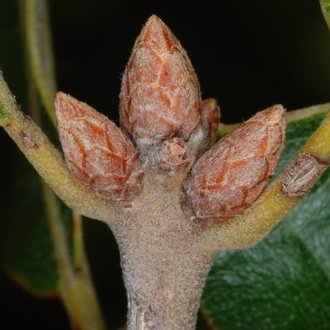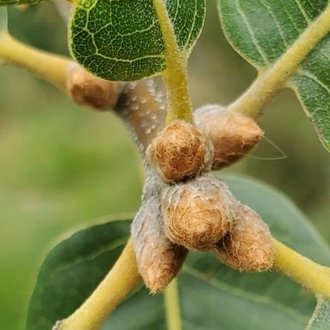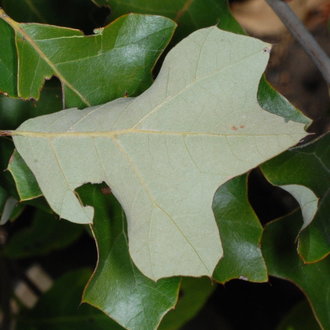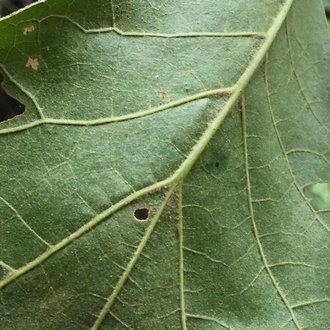Bear Oak vs Blackjack Oak
Bear oak and blackjack oak can be confused as both can occur together in harsh, barren habitats, and in such habitats blackjack oak may exhibit a scrubbier growth habit more like bear oak. They are usually easily distinguished by differences in leaf shape, buds, acorn caps, and growth habit. Their ranges only overlap in a small portion of the Mid-Atlantic and mid-to-southern Appalachians; bear oak ranges farther north and blackjack oak farther south and west.
Bear Oak (Quercus ilicifolia) | Blackjack Oak (Quercus marilandica) |
A small, shrubby oak, typically inhabiting harsh habitats, such as fire-prone barrens or rock outcroppings, where large trees cannot grow. | An oak, native to eastern North America, adapted to extreme, nutrient-poor sites that burn regularly. |
Leaves usually have 3-7 lobes. Lobes are slightly more deeply-cut, with more typical oak shape. More likely to have lobes near the base of each leaf. Photo © Laura, CC BY 4.0. | Leaves atypically shaped for an oak, usually with 3-5 lobes, often wedge-shaped overall with broad, flat-across tip and narrow base. Three lobes at the tip of leaf are not deeply-cut, sometimes straight-across. Often lacks lobes at the base of each leaf. Photo © Even Dankowicz, CC BY 4.0. |
More sprawling, shrubby growth habit, often with multiple trunks, usually growing horizontally. Photo © ttadevosyan, CC BY 4.0. | More tree-like growth habit, often with a single, upright trunk, even on harsh sites. Photo © Leila Dasher, CC BY 4.0. |
Acorn cap covers 1/3rd to 1/4 the cup, less on average. Acorn cap has flatter base. Acorns average smaller, but size is variable and overlaps. Photo © Doug Goldman, CC BY 4.0. | Acorn cap usually covers about 1/3rd the cup, more on average. Acorn cap more tapered at the base. Acorns average larger, but size is variable and overlaps. Photo © tallpaultheforester, CC BY-SA 4.0. |
Terminal buds much smaller, 2-4.5mm long, reddish brown, usually less pubescent to where the underlying brown color is more visible, less visibly angular. Photo © Doug Goldman, CC BY 4.0. | Terminal buds much larger, 10-15mm long, pubescent throughout to the point of appearing lighter in color, strongly 5-angled in cross-section. Photo © Alex Zorach, CC BY-SA 4.0. |
Leaf undersides covered in dense, matted hairs, appearing pale in color, contrasting greatly with darker green tops of leaves. Photo © Doug Goldman, CC BY 4.0. | Leaf undersides scaly, crusty-granular, or with scattered hairs. Only slightly lighter in color than tops of leaves. Photo © Becky, Public Domain. |
References & External Resources
These short lists show only links helpful for ID. For a complete list of references and resources also covering other aspects of ecology, visit the links section of the full article on each plant, which is the first entry here.



